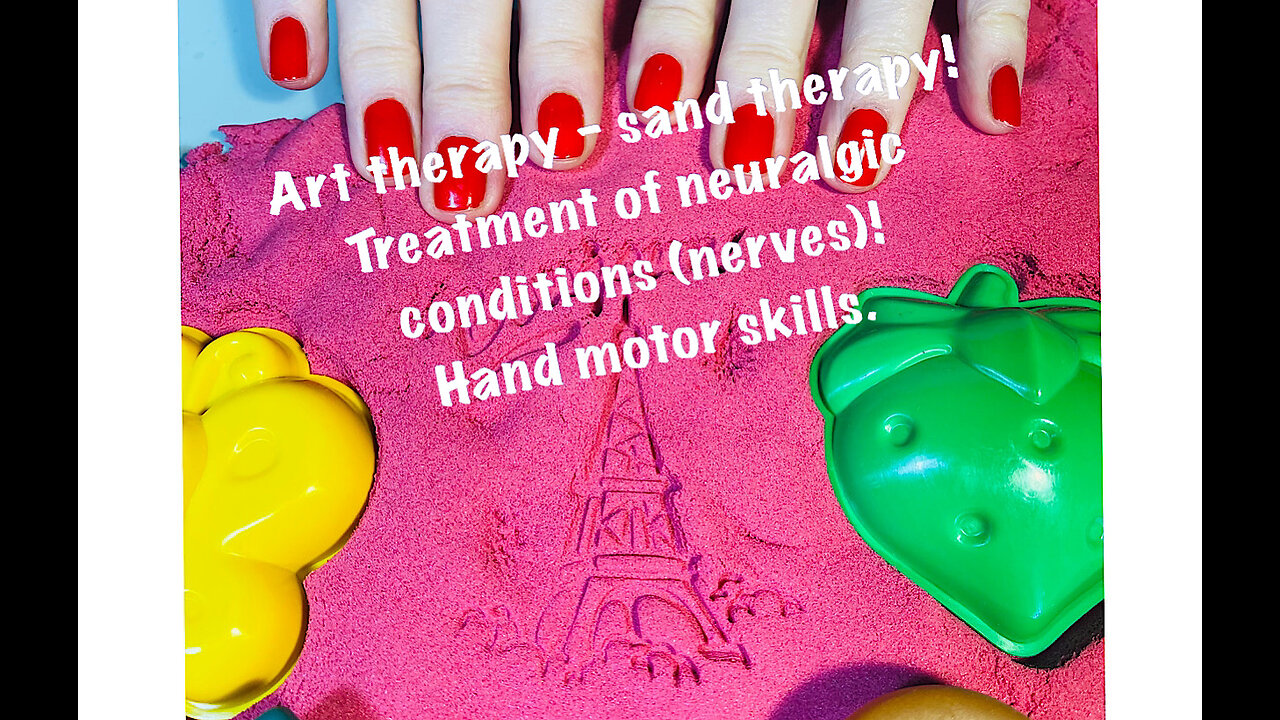Premium Only Content

Art therapy, sand therapy! Treatment of neuralgic conditions (nerves)! Hand motor skills.
Part1. Video for adults over 55 years old and children over 3.5 years old.
Art therapy is one of the areas of psychotherapy that is currently actively developing, and thanks to a number of its advantages, it is finding more and more supporters.
Translated from English, art therapy means treatment with art (art - “art, skill” and therapy - “treatment, therapy”). The term was first used by artist Adrian Hill in 1938. Working in a sanatorium with patients with tuberculosis, he noticed that creativity has a beneficial effect on well-being and allows one to better cope with the disease. Describing his work, he began to use this term, which remains relevant today. Later in its development, art therapy found support from S. Freud and K.G. Jung because it allowed access to the unconscious part of the psyche, which contains the source of internal conflict with its neurotic symptoms. And in 1960, the American Art Therapy Association was created in America.
Currently, art therapy is developing widely, thanks to the opportunities that it opens up for any person who wants to find new ways to understand themselves, regulate their psycho-emotional state, adapt to the world around them (which is becoming more and more complex and makes new demands), and of course, art therapy promotes the development of the ability for closer and deeper relationships with other people, especially its group options.
Most often, this type of psychotherapy is associated with drawing (isotherapy), but this is only one of the areas. Art therapy is, first of all, a creative process of self-expression and therefore everything that, in one form or another, allows us to accomplish this task can be attributed to it. These include music, dance and sand therapy, creating collages, bibliotherapy, color therapy, fairy tale therapy, play therapy, modeling from clay and other materials, creating dolls, working with metaphorical associative cards, as well as many other types.
Art therapy differs from ordinary classes of the corresponding types of art in that it does not require any skills, only desire is important! Here all the work is aimed not at the result, but at the process itself. What is important is spontaneity and openness to creativity, the ability to give up control and evaluation of what is happening and one’s results. As Pablo Picasso wrote: “I would like to draw the way children do - for them there are no laws or proportions, so their drawings are full of expression and life...”
Anyone can practice art therapy, find their own ways of creative self-expression in order to develop their sensitivity to their own needs, better recognize and understand themselves, influence their psycho-emotional state and thereby live a more fulfilling, harmonious and happy life, develop themselves, solve various life problems. difficulties and find resources to overcome them. Art therapy is appropriate at any age and good for any period of life. But it is especially relevant in a neurotic state. Kinetic sand and relaxation sounds. To your health!
-
 2:42:40
2:42:40
TruthStream with Joe and Scott
16 hours agoTHOMAS AND GROK: AI, Bible decodes, The JESUS Cube live 9/6 #487
29.9K6 -
 2:34:46
2:34:46
BlackDiamondGunsandGear
10 hours agoGet Prepped / After Hours Armory / LIVE SHOW /
20.2K1 -
 2:01:39
2:01:39
Tundra Tactical
9 hours ago $8.30 earned🛑LIVE NOW!! This spits in the face of the Second Amendment.🛑
31.2K8 -
 2:34:46
2:34:46
DLDAfterDark
8 hours ago $2.51 earnedIt's SHTF! Do You Have What You Need?? Let's Review Items & Priorities
22.1K6 -
 28:58
28:58
Stephen Gardner
9 hours ago🚨Explosive allegations: Rosie O’Donnell connects Trump to Epstein scandal!?
38.8K71 -

SavageJayGatsby
2 days agoSpicy Saturday | Let's Play: Grounded
50K2 -
 2:06:27
2:06:27
MattMorseTV
10 hours ago $52.85 earned🔴Vance just went SCORCHED EARTH.🔴
130K191 -
 46:41
46:41
The Mel K Show
15 hours agoMel K & Corey DeAngelis | The Hopelessly Captured Teacher’s Unions: Biggest Threat to Our Children & Future | 9-6-25
38K5 -
 2:52:42
2:52:42
Mally_Mouse
1 day ago🔥🍺Spicy HYDRATE Saturday!🍺🔥-- Let's Play: Grounded
33.7K3 -
 1:32:27
1:32:27
Patriots With Grit
10 hours ago"HELP... They're Killing Me" | Gail Seiler
14.2K1